We are in the Urbanização do Mato Santo Espírito, in Tavira, from where, every Monday and Wednesday morning, close to a dozen children leave for a bus that takes them to school.
This is, however, a bus quite different from the usual, since there are no wheels or fuel here, just a lot of energy from the children to, with at least two adults, make a journey on foot of about 20 minutes.
"But what bus is this"? readers ask. It is about followfoot human bus – a project that follows the initiative “Ruas do Bairro, Amigas da Criança”, by the Association for the Promotion of Child Safety (APSI), which began in Lisbon and arrived in Tavira in November 2021.
Since then, the project has been put into practice in this Algarve city by the Wild Routines Association, of which Adriana Saraiva, occupational therapist, is part of it.
«The Mato de Santo Espírito Route is the most significant because there is a larger group of children living here and it is also one of the routes that involves, in a more marked way, the displacement of cars to the city. However, there is one more route, that of Miramar», begins by explaining Adriana Saraiva, this Wednesday, May 18th, the day on which the Sul Informação accompanied the human bus on another walk to the Horta do Carmo Basic School.
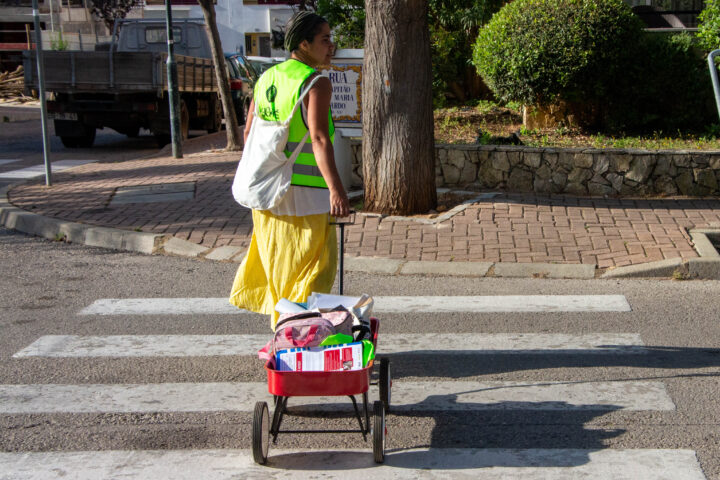
It was 8:20 am when the first children began to arrive.
“Good morning”, they were saying to each other, while showing enthusiasm for the beginning of another day. The backpacks are placed in a wheelbarrow that the therapist Adriana carries and the children, light, are all happy to walk there.
Close to the “SigaPé” stop, Adriana explains that there is also a bus stop for the Câmara bus and, therefore, this was a strategic choice to attract young people. «The idea is that the children who go there see our bus and one day, who knows, they may also come with us”.
After leaving the bus stop, a few meters ahead, there are a few more children, three accompanied by their mothers, Andreia, a teacher, and Severa, who, after learning about the project, decided to join in and walk with their children on the human bus.
«This is also good for getting to know the environment, for orienting themselves, gaining autonomy, improving self-esteem and interpersonal relationships. The kids always end up creating mini groups within the groups, in which they talk and comment on what surrounds them», explains Adriana Saraiva, saying that many children only orient themselves by the key points (such as supermarkets), but then they have no idea of the next door and the geography of the land where they live.
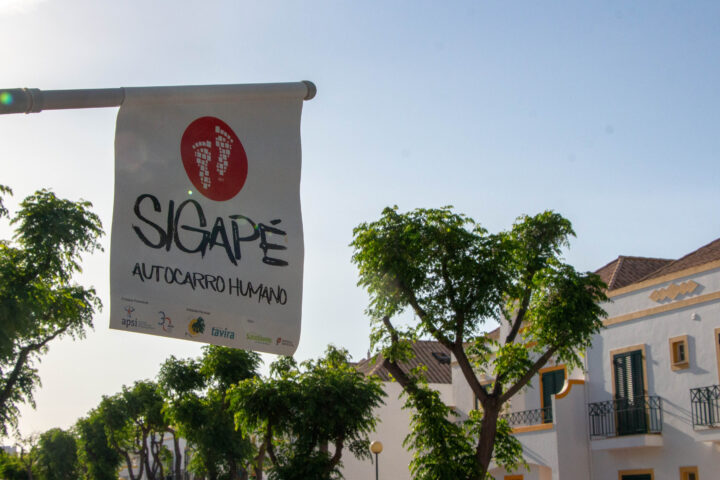
“Many are always in capsules. Nowadays, the trend is to look more and more to the cell phone as a socializing tool, but eye contact is much more important. In addition, the idea is also to counteract the sedentary habits that were more marked by the pandemic. It does not mean that we are anti-mobile phones – the truth is that they are here and we have to take advantage of this added value – but, at the same time, to do the counterpoint with things that are healthy and promote active mobility, which is one of the things increasingly critical in development», continues the occupational therapist.
In addition, the professional explains that walking is a way to make kids arrive at school with a more active brain.
Along the way, we were still talking to some of the occupants of the bus, who were very happy and excited to have this opportunity to walk to school with friends.
As Adriana Saraiva explains to Sul Informação, the project was put into practice after a survey carried out with the families of students in the first cycle.
“From that survey, we took the prevalence of complaints made. Afterwards, we worked with the third and fourth year students, in order for them to analyze the surrounding area around the school and understand what were the opportunities and challenges they encountered», continues the occupational therapist.
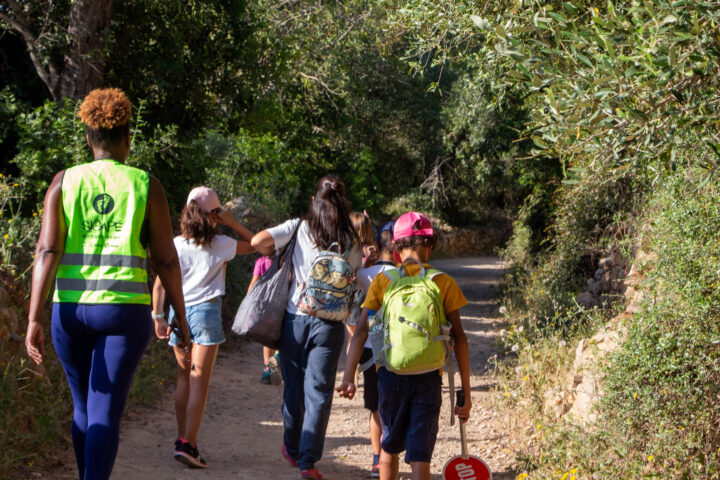
More crosswalks, measures to reduce traffic and speed were the most mentioned. Thus, in the course of the project, some changes have already been made, such as the signaling of a crosswalk at the crossing of the national road 125 - which this Wednesday was, for the first time, trodden on by children from the human bus.
After about 20 minutes of walking, at 9:00 am, the route was finished. In an instant, all the children removed their backpacks from the wheelbarrow, which accompanied them throughout the journey, and proceeded to run to the classroom.
For Adriana Saraiva, the objective now is to join more children to the buses and encouraging other parents to create more routes: just as Ana Bela, another mother, does with the Miramar route.
“Our goal is to expand to other routes, but as long as we don't have enough people, it's not feasible. The idea is that this becomes a bit of a community movement. If there are at least two parents who ensure the route, it is good”.
Photos: Mariana Sedge | Sul Informação
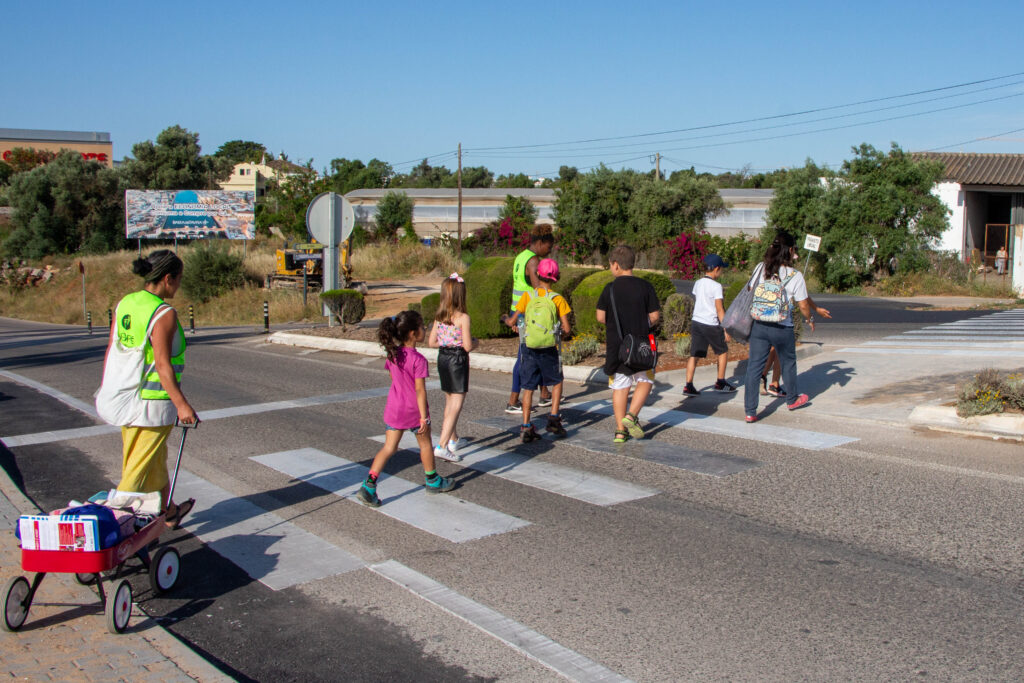
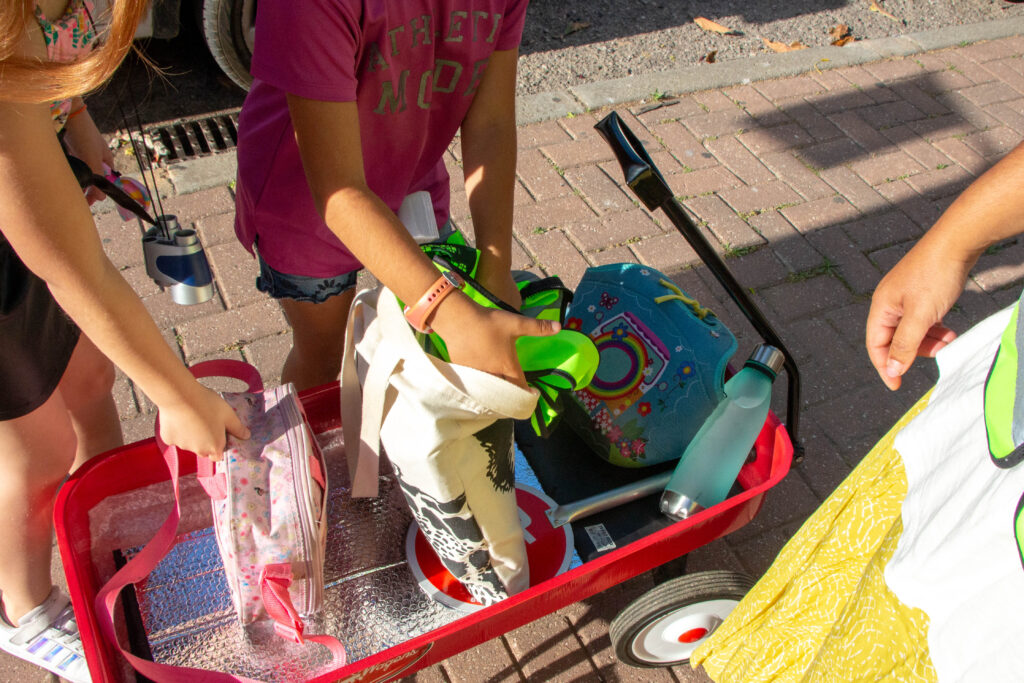
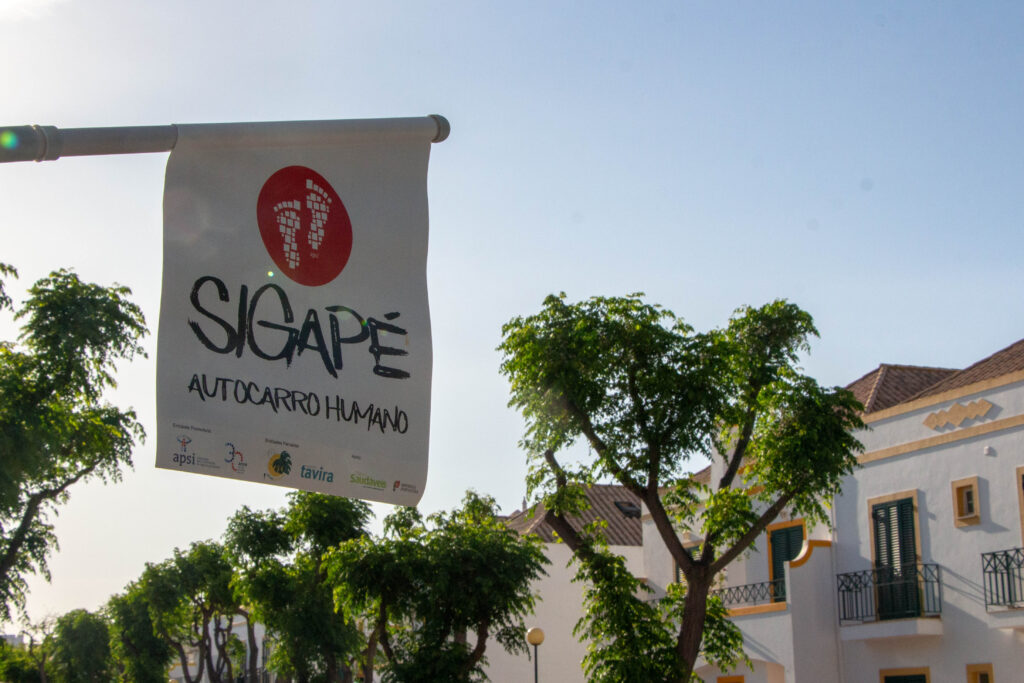
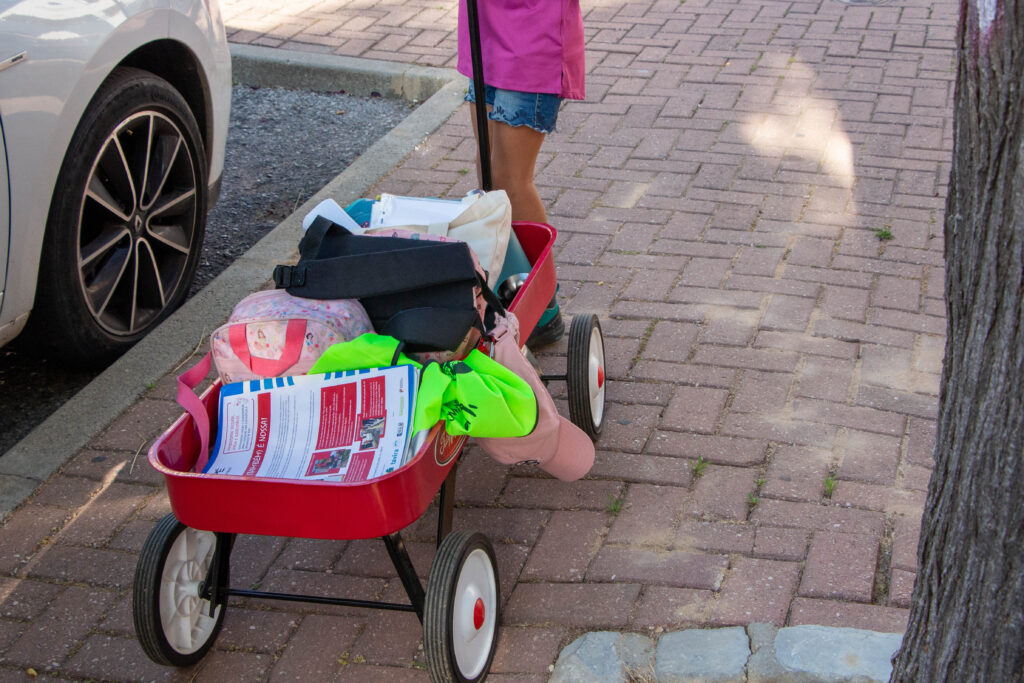
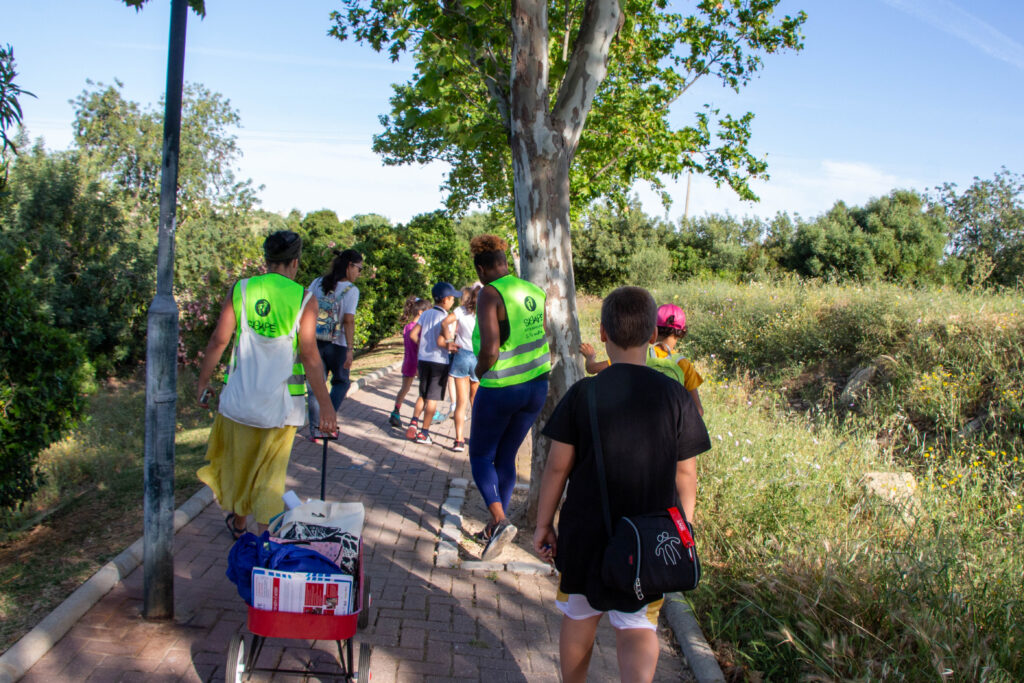
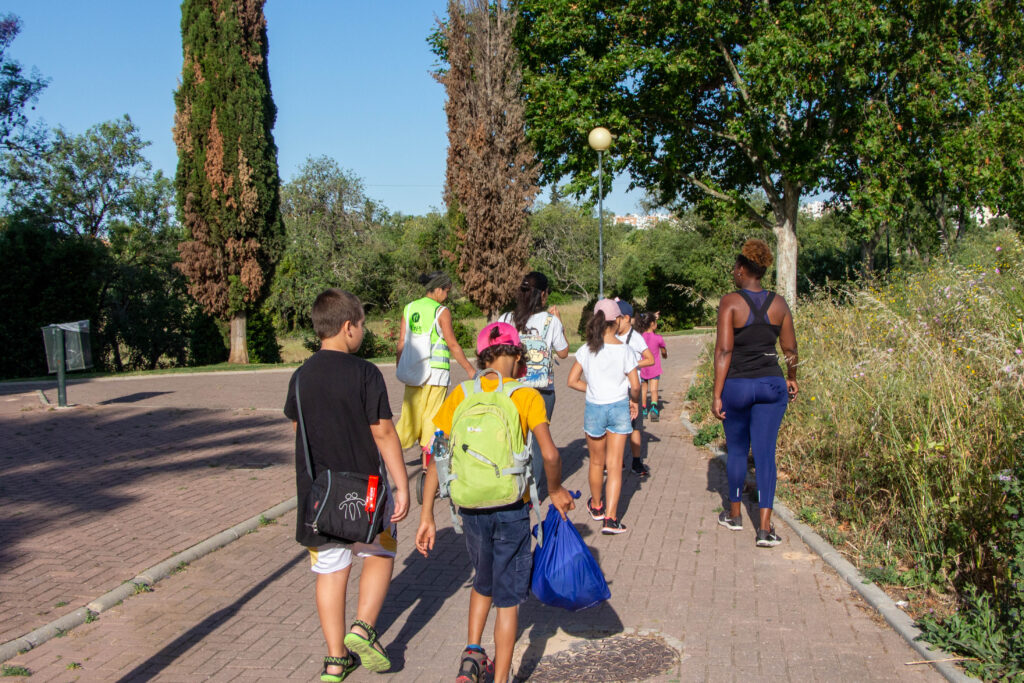
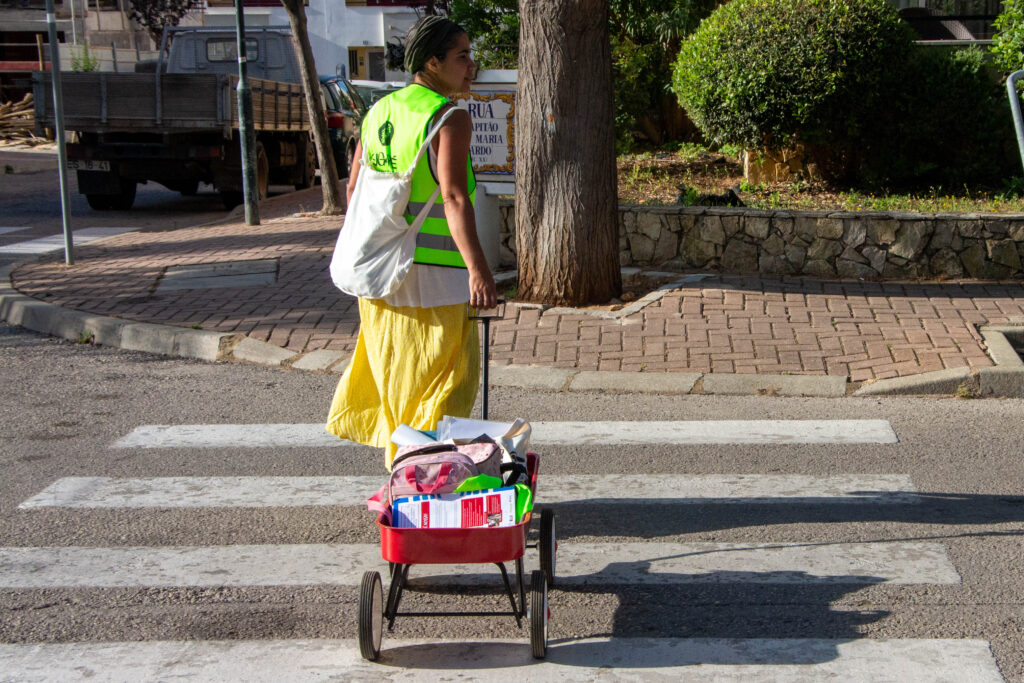
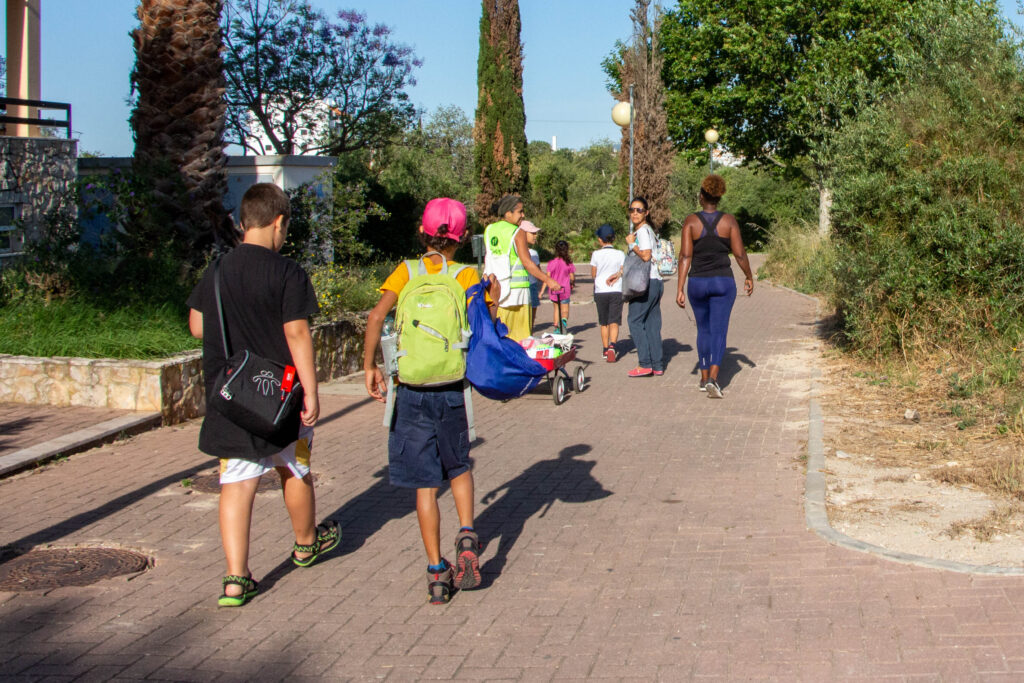
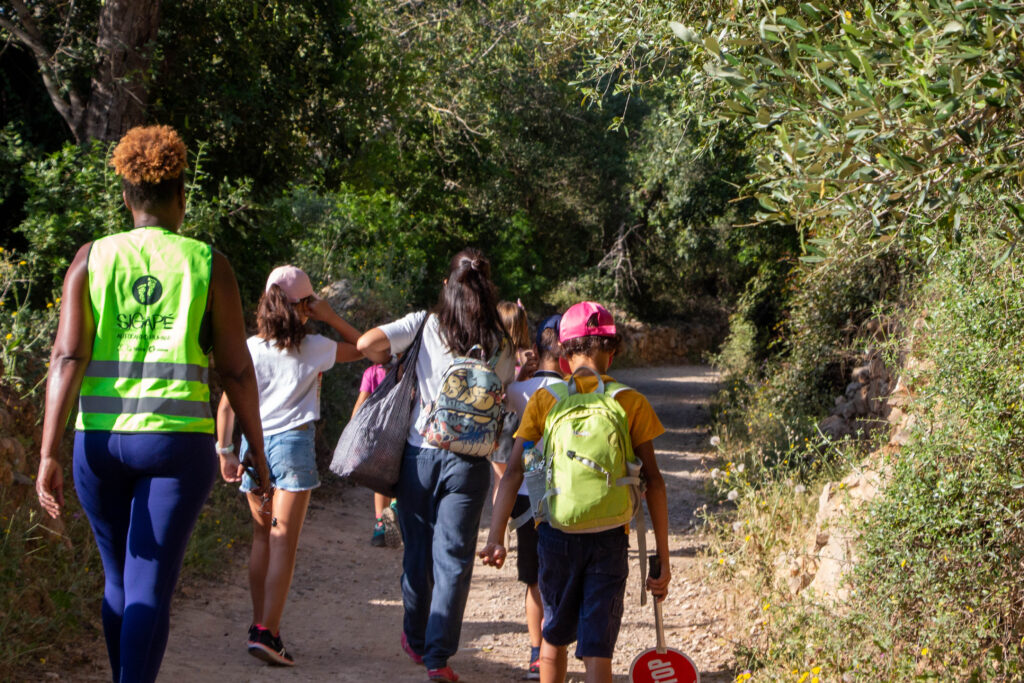
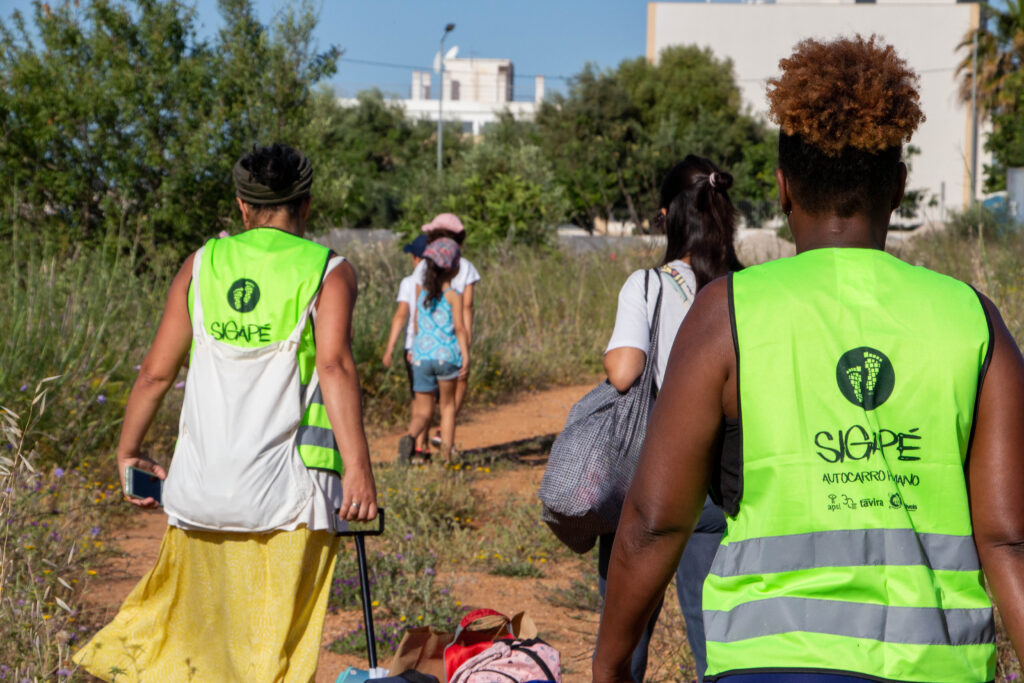
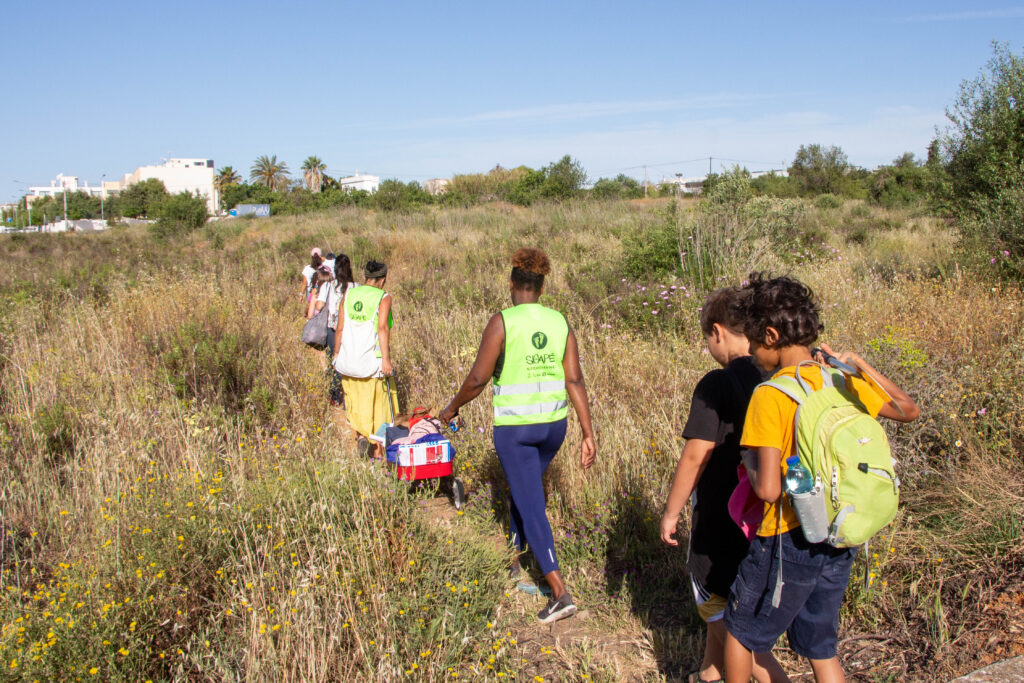
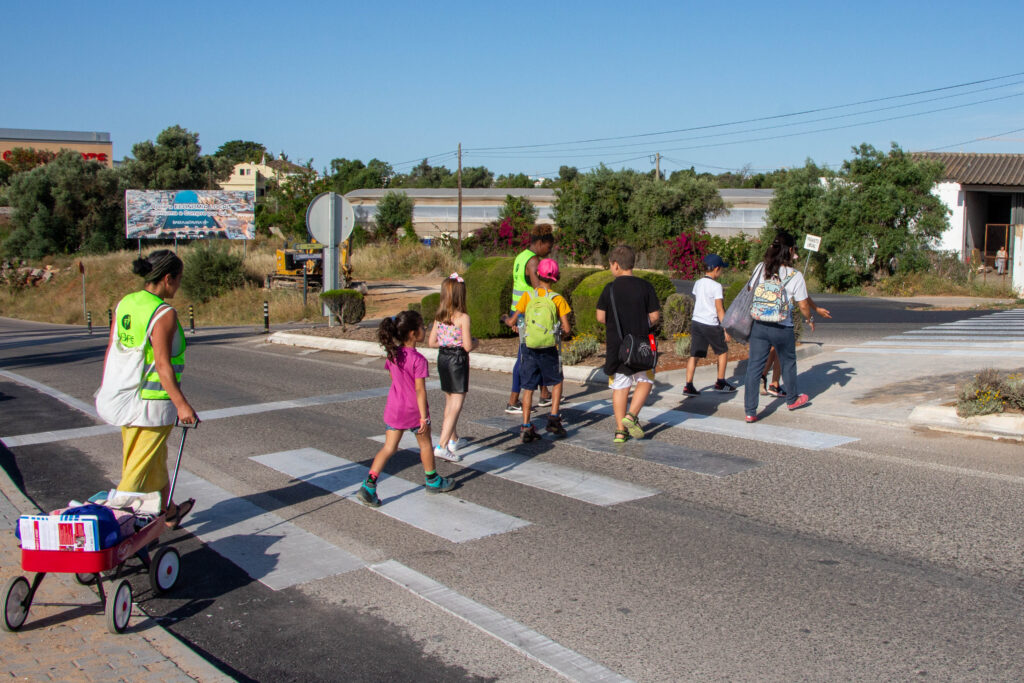
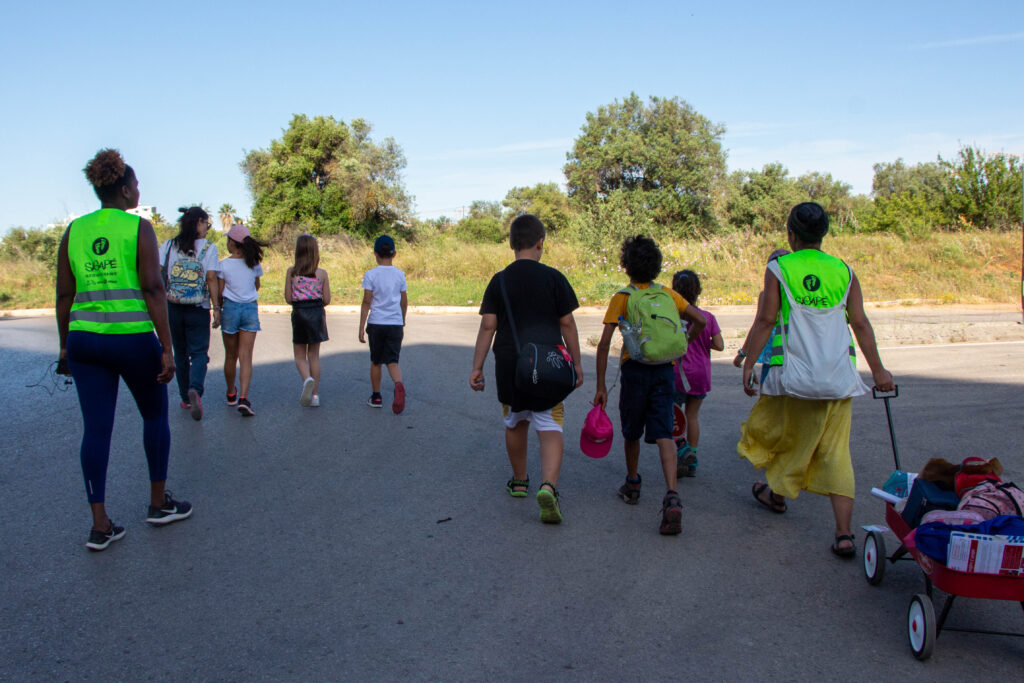
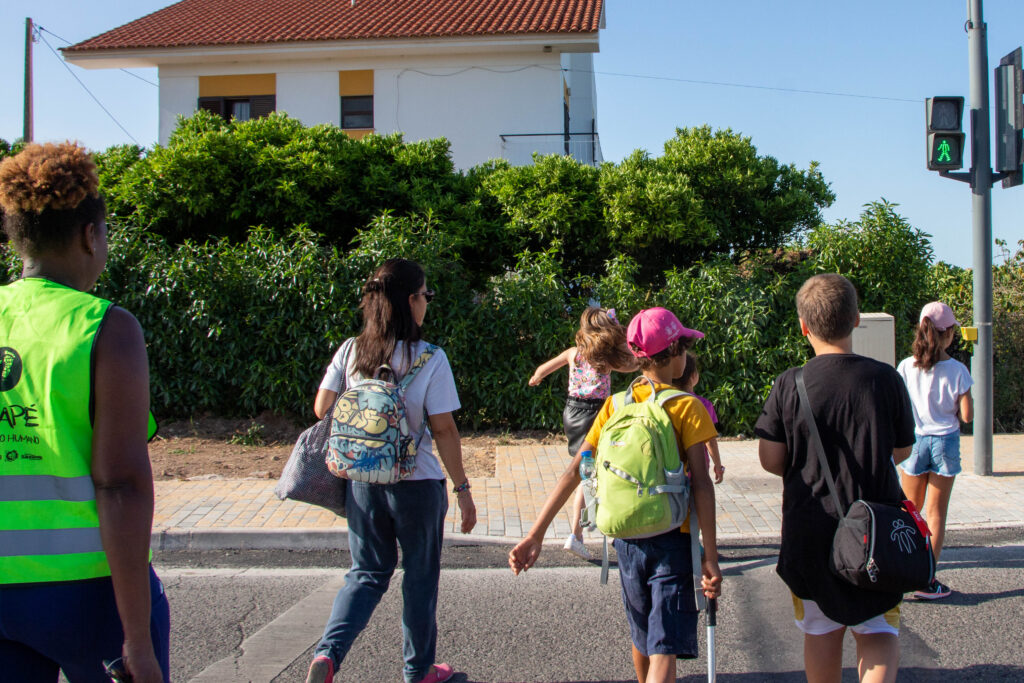
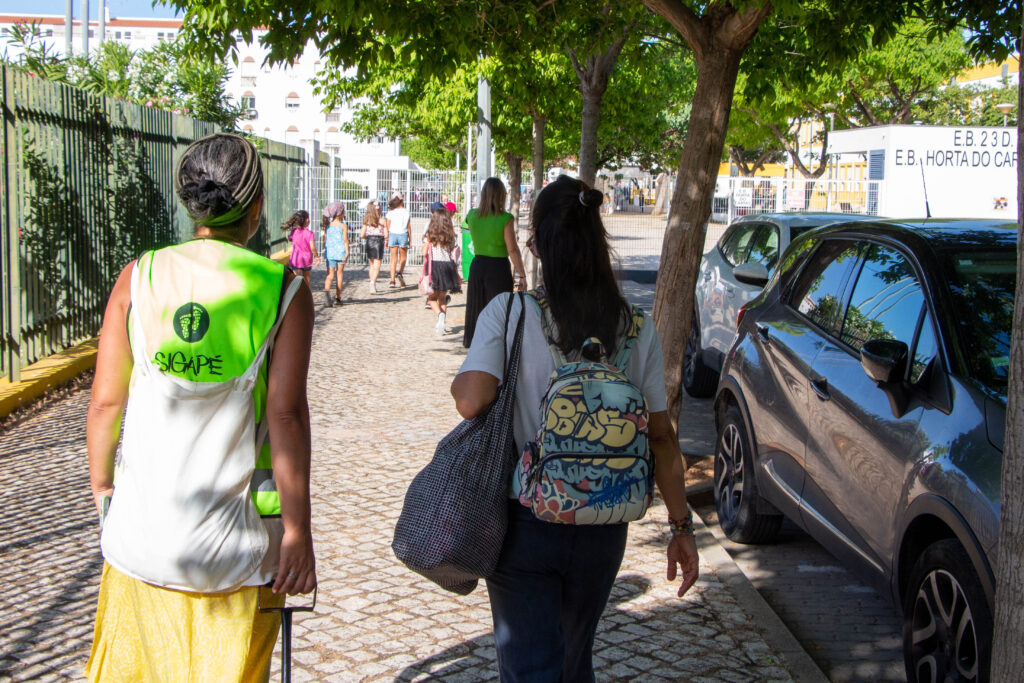
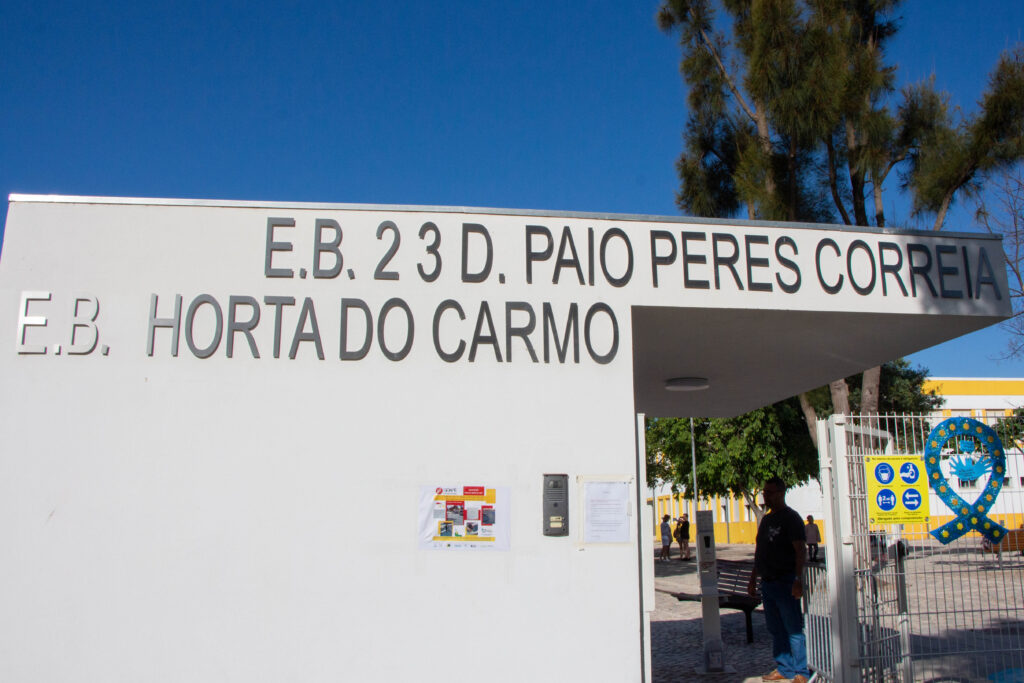
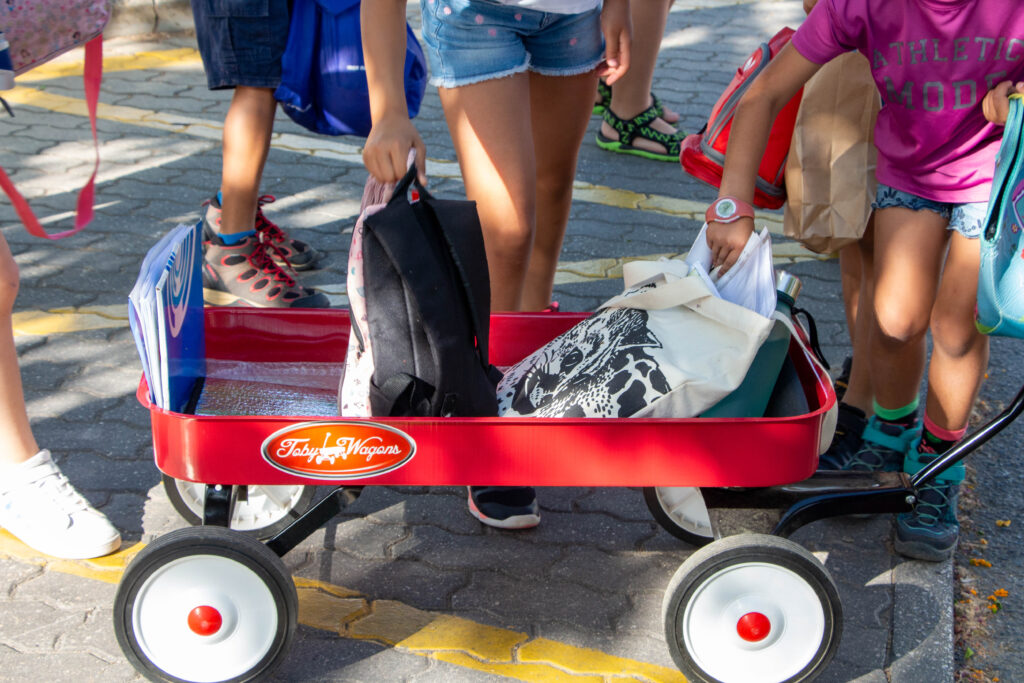



















Comments